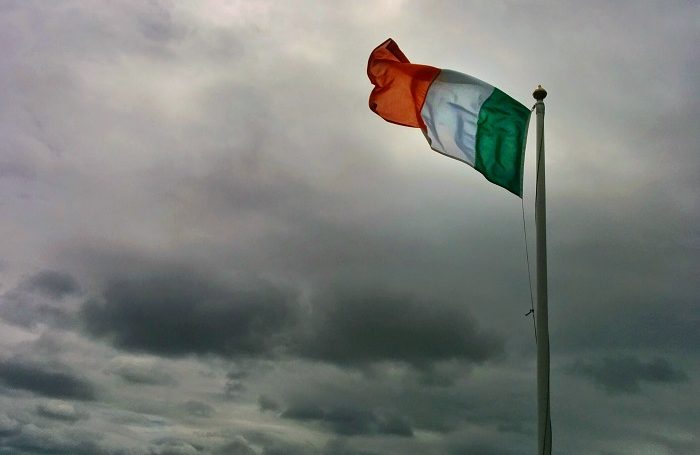
2016 marked the centenary of the 1916 Rising, the seminal event in modern Irish history, which ultimately led to Irish independence from the UK in 1921. In 2017, while Anglo-Irish relations have arguably never been so good (the UK even chipped-in to the Irish financial bailout in 2010), Ireland’s future remains once again partly at the mercy of an unfolding drama in its closest neighbour.
Brexit is likely to pose enormous economic challenges for Ireland. The volume of trade between Ireland and the UK runs at over €1 billion a week, and Ireland is the UK’s 5th largest trading partner, ahead of China, India and Brazil combined (DFA, 2016). A 2015 study by the Dublin-based Economic and Social Research Institute warned Brexit could reduce bilateral trade between the UK and Ireland by 20%, with every 1% drop in UK growth hitting Ireland by between 0.3-0.4%.
Socially, these islands have been intimately linked for centuries, with millions of migrants moving back and forth across the Irish sea (even Saint Patrick was Welsh). About 500,000 Irish-born live in the UK–and 250,000 UK residents live in Ireland, comprising almost 5% of the Irish population. Millions of UK citizens claim Irish ancestry, and Irish studies scholar Bronwen Walter claims that up to 6.7 million people in the UK who don’t already have an Irish passport could be entitled to one–a significant number given the Republic of Ireland’s current population of 4.7 million.
However, the most crucial issue for Ireland is that Brexit raises questions about the future of the Irish border. The only land-border the UK shares with another EU country is 500km long and runs between Northern Ireland—a constituent part of the UK, which voted 56%-44% to remain in the EU—and the Republic of Ireland, an enthusiastic EU member. Since 1923, the UK and Ireland have overseen a Common Travel Area which allows free movement across the border, predating membership of the European Communities by 50 years, and freedom of movement under the Treaty of Maastricht by almost 70 years. On average 20,000 people cross the border each day for work, study and pleasure. Any restrictions on this free movement could endanger the fragile peace process in Northern Ireland, and would be seen as a backwards step towards the dark days of the Troubles.
In short, Ireland and the UK are economically, socially and politically intertwined. Brexit will almost certainly have a negative impact on Ireland’s economy, just as the country takes its first breaths following a controversial bank bailout in 2008, an ignominious Troika (of the EU/ECB/IMF) bailout in 2010, and years of austerity. In the longer run, Brexit could alter the very composition of the Irish citizenry, as some UK citizens seek to ensure their EU membership by claiming their right to an Irish passport. Already in 2016, the Irish department of Foreign Affairs recorded a 40% rise in passport applications from the UK compared to 2015. The instability caused by the prospect of Brexit has also emboldened Irish nationalists, as Brexit is seen as an opportunity to reunite Northern Ireland and the Republic. Calls for a reunification poll have long been voiced, but rarely have they been taken as seriously as now.
The Irish government will have to tread a careful line during the Article 50 negotiations. The UK is an important trading partner, particularly for the Irish agricultural sector, which suggests that Ireland will seek a deal that treats the UK well. On the other hand, Ireland exports almost as much to Belgium as it does to the UK, particularly in growth sectors such as pharmaceuticals and medical devices. There are also those who welcome the prospect of ‘Brexit’ attracting jobs from the UK, particularly in financial services. Following the recent announcement by Barclays Bank that Dublin will host its EU headquarters post-Brexit, such optimism may not be without foundation. Nonetheless, the creation of new financial sector jobs will hardly outweigh the potentially ruinous impact of Brexit on Irish trade.
The Irish government can take some heart from the UK government’s white paper on exiting the EU explicitly referring to the need to protect the UK’s ‘strong and historic ties with Ireland and maintaining the Common Travel Area’. However, any Irish government will also be aware that the structural power it wields at EU-level is limited by the country’s size and geopolitical significance, a lesson hard-learned during the dark days of the Troika bailout and the punitive austerity which followed.
During the first 50 years of independence Ireland’s foreign policy was largely defined by being separate from the UK. For the 44 years since Ireland’s accession to the European Communities in 1973, Irish foreign policy has been largely defined by its membership of the EU where Ireland and the UK sit as peers. Among other things, this has contributed to the normalising and strengthening of relations between the two countries.
Brexit now forces the Irish government to choose a path that lies somewhere between the UK and the EU. The Irish EU Commissioner Phil Hogan has urged Ireland to ‘keep its distance from the UK’, and warns against Ireland’s position during the negotiations being too greatly influenced by its relationship with the UK, particularly if the UK’s divorce from the EU becomes acrimonious, as it may well do. Either way, Ireland will almost certainly have to pick a side, and such a choice is unlikely to be easy for any Irish government.
Further Reading on E-International Relations
- Opinion – Brexit and the Continued Troubles in Northern Ireland
- Understanding Sinn Féin’s Abstention from the UK Parliament
- The Fight Continues: New Access to Abortion Services in Ireland
- The Decline of the SDLP and their European Election Brexit Headache
- Lingering Effects of the UK’s Brexit Role Change
- Opinion – Brexit and Its Many Identities in the UK